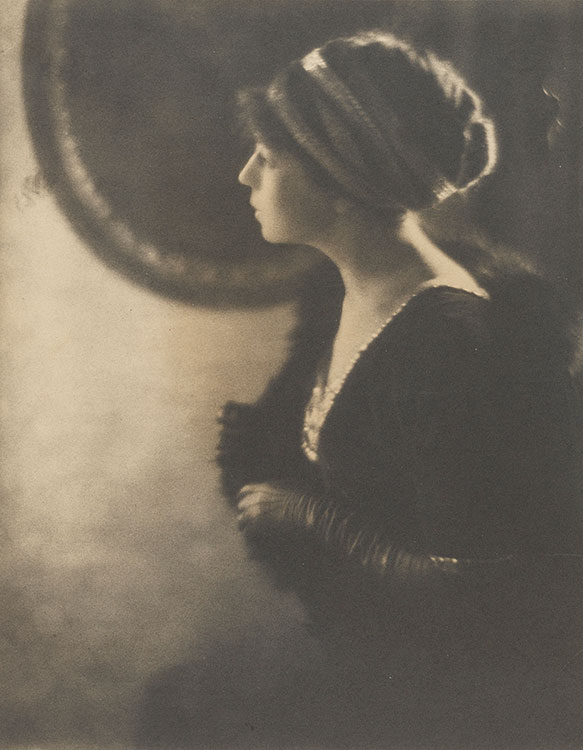 The origin of Belle Greene’s interest in John Keats is obscure. Though we know she enjoyed reading poetry—especially Shelley, Keats, Dante, and Baudelaire—it is unclear whether her taste in literature was cultivated in childhood by her father, the educator and activist Richard T. Greener (1844–1922), or later in life. Extant archives offer tantalizing glimpses of Greene’s interest in Keats, though many questions remain: what were her favorite Keats poems, for instance?
The origin of Belle Greene’s interest in John Keats is obscure. Though we know she enjoyed reading poetry—especially Shelley, Keats, Dante, and Baudelaire—it is unclear whether her taste in literature was cultivated in childhood by her father, the educator and activist Richard T. Greener (1844–1922), or later in life. Extant archives offer tantalizing glimpses of Greene’s interest in Keats, though many questions remain: what were her favorite Keats poems, for instance?
By 1909, a few years after starting her position as J. Pierpont Morgan’s Librarian, Greene was actively purchasing Keats manuscripts for the collection. Her first documented acquisition of a Keats manuscript is a lengthy journal-letter sent by Keats in September 1819 to his brother George and sister-in-law Georgiana, both of whom had been living in America since the summer of 1818. Keats customarily sent them long, descriptive letters like this one, composed over the course of ten days; these letters touched upon his life and work and sometimes included copies of his poetry. Greene acquired the letter at the 1909 auction of Louis J. Haber’s British literature collection, with the bookselling firm George H. Richmond acting as her agent. A.J. Bowden, an employee at the firm, described the twenty-eight page manuscript as “the best thing of its kind ever offered.”
Belle Greene’s most important early Keats acquisition came in 1912, when she procured a letter written by Keats in February 1818 to his publisher John Taylor (1781–1864). Frank Wheeler of J. Pearson & Co., the same dealer who sold the Endymion manuscript, offered the letter to Greene, as described in a letter to J. Pierpont Morgan:
“Last month I sent Miss Greene an advance copy of a printed (and priced) list of Books and Manuscripts of superlative importance which I had been lucky enough to purchase privately … Miss Greene has made her selection— inter alia, a superb letter of Keats about the publication of Endymion— the finest Poet’s letter that I’ve ever seen.”
The acquisition shows Greene’s discerning eye for collection development, as the letter, sent to Keats’s publisher John Taylor, contextualizes the publication of Endymion in interesting ways. Keats responds to editorial queries about punctuation and proof corrections while also commenting more generally on the role of the poem in his fledgling career. As Keats writes, using a rather obscure metaphor, “In Endymion I have most likely but moved into the Go-cart from the leading strings.” (A “go-cart” is a walker for babies and would have marked a progression from “leading strings,” also used to aid small children learning to walk.)
Most notably, the letter outlines Keats’s three “Axioms” for poetry:
1st I think Poetry should surprise by a fine excess and not by Singularity— it should strike the Reader as a wording of his own highest thoughts, and appear almost a Remembrance—
2nd Its touches of Beauty should never be half way thereby making the reader breathless instead of content: the use, the progress, the setting of imagery should like the sun come natural [,] natural too [sic] him—shine over him and set soberly although in magnificence leaving him in the luxury of twilight. but it is easier to think what Poetry should be than to write it —
[3rd] and this leads me on to another axiom. That if Poetry comes not as naturally as the Leaves to a tree it had better not come at all.
This famous commentary on poetics exists in the absence of any formal work by Keats on literary theory or criticism: unlike Coleridge, with his Biographia Literaria (1817), or Wordsworth, with his “Preface” to Lyrical Ballads (1800), Keats did not publish works of literary criticism but rather expressed such ideas in private letters.
The first of the axioms, from which this exhibition takes its title, speaks to the authenticity of imaginative expression, which seems to approximate a reader’s own thoughts and resemble a deeply held memory. The notion of poetry “surpris [ing] by a fine excess” complements the second axiom’s focus on how a writer should deploy imagery and “its touches of Beauty.” The third and final axiom is certainly the most famous, though Keats undercuts its impact by admitting, at the end of axiom two, that “it is easier to think what Poetry should be than to write it.”
Baron Adolf De Meyer, Belle Greene [photograph], ca. 1910? ARC 1664. Archives of the Morgan Library & Museum
